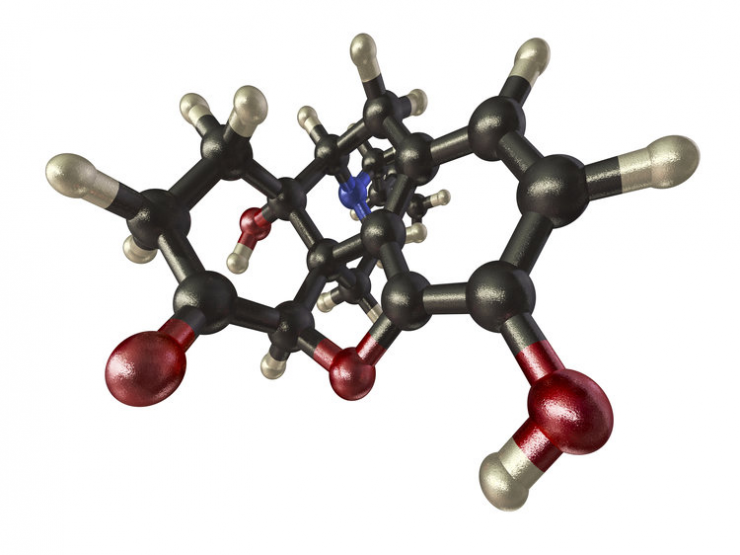In the continuing struggle to circumvent abuse of drugs to treat opioid dependence and enhance compliance regimes for better outcomes, Titan Pharmaceuticals (OTCBB:TTNP) is leading the race with a matchstick-sized implant of the approved drug, buprenorphine, which eases withdrawal symptoms.
“With more than two million people in the U.S. suffering from opioid dependence, there is a strong need for new treatments,” president, Sunil Bhonsle, says in an interview with BioTuesdays.com.
“If approved, our slow-release Probuphine implant would be the first and only treatment of opioid dependence to provide continuous, around-the-clock blood levels of buprenorphine for six months following a single, 15-minute in-office procedure,” he adds.
Buprenorphine is already on the market as a daily-dosed sublingual tablet and filmstrip, with annual sales of some $1.5-billion. However, the drug can be abused by injecting or snorting crushed tablets.
Titan’s solution for the maintenance treatment of opioid dependence involves inserting its Probuphine implants just under the skin in the upper arm, where they release continuous, small doses of buprenorphine over a six-month period and cannot be easily removed.
Probuphine is the first product candidate to utilize Titan’s patented, long-term drug delivery technology, ProNeura. Titan has also embarked on the early stages of the development of a ProNeura-based product for Parkinson’s disease. Titan believes its ProNeura platform technology has the potential to benefit patients suffering from specific chronic diseases for which maintaining consistent blood levels of a medication over long periods may improve medical outcomes.
Last year, the FDA accepted Titan’s new drug application (NDA) for priority review of Probuphine, and an FDA advisory committee voted in favor of approval in March. However, the FDA gave Titan a complete response letter at the end of April 2013, requesting additional testing with a different patient population.
The first patient in the second study to support resubmission of the NDA in late 2015 was treated last month. Titan’s North American partner, Braeburn Pharmaceuticals, is conducting the study.
“Opioid dependence is recognized by the government as a medical epidemic that warrants immediate and significant resource allocation,” says Kate Glassman-Beebe, EVP and chief development officer of Titan. The company received a $7.6-million grant from the NIH’s National Institute on Drug Abuse in 2010-2011 to support development of Probuphine.
In the U.S., buprenorphine has replaced methadone as the gold standard in treating opioid dependence because of its improved safety profile and lack of euphoria. Since 2006, sales of buprenorphine, or Suboxone, by Reckitt Benckiser Group have far outstripped sales of methadone.
According to Dr. Glassman-Beebe, the challenges with oral buprenorphine include compliance issues, fluctuating drug levels in the blood and abuse.
“Probuphine is designed to maintain a stable, round-the-clock blood level of the medicine for up to six months, enhancing patient compliance and retention,” she contends.
Probuphine is a dry mixture blend of buprenorphine and ethylene-vinyl acetate, which is extruded to form implants that are 26 mm long and 2.5 mm in diameter. Each implant contains 80 mg of buprenorphine, and the procedure involves placing four implants in a patient’s upper arm under a local anesthetic. The implants are removed in six months, and four new implants are then inserted in the other arm.
The efficacy and safety of Probuphine have been studied in several clinical trials, including a 163-patient, placebo-controlled study over a 24-week period, the results of which were published in the Journal of the American Medical Association, and a follow-on study of 287 patients, which was published in the peer-reviewed journal Addiction. The studies formed the basis of the company’s NDA.
Dr. Glassman-Beebe explains that the new pivotal study will enroll some 180 patients to see how well Probuphine works in patients who have been clinically stable on lower doses of buprenorphine for a period of at least three months and have achieved a certain level of abstinence from opioids.
The randomized, double blind and double dummy study will provide information for a non-inferiority comparison of a six-month treatment with a dose of four Probuphine implants against treatment with 8 mg or less of a daily-dosed sublingual formulation of buprenorphine. The trial is scheduled for completion in mid-2015.
Dr. Glassman-Beebe says initial market research indicates that physicians would recommend Probuphine to patients stabilized on buprenorphine therapy, patients with a high relapse history, new patients, young patients and incarcerated patients.
Titan figures Probuphine’s peak sales potential at $300-million to $500-million a year in opioid dependence. In addition to upfront, approval and sales milestone payments of nearly $200-million from closely-held Braeburn, Titan would be eligible for tiered royalties in the mid-teens to low-twenties per cent.
The Probuphine implant also has the potential to be developed for the treatment of chronic pain. Dr. Glassman-Beebe says buprenorphine patches are widely used in Europe for the treatment of moderate-to-severe chronic pain and are also approved in the U.S. and Australia.
“Our value proposition for treating chronic pain is around-the-clock, non-fluctuating therapeutic levels, which enhances compliance and increases patient convenience,” she adds.
Mr. Bhonsle hopes Braeburn Pharmaceuticals will pursue this indication following approval of Probuphine for opioid dependence, subject to discussions with the FDA.
In addition to its buprenorphine program, Titan has conducted preclinical studies in primates with the long-term delivery of dopamine agonists—specifically, ropinirole, which is sold as Requip by GlaxoSmithKline, for the treatment of Parkinson’s disease (PD).
Besides safety, Titan’s non-clinical studies have shown that a ProNeura-ropinirole implant was able to sustain non-fluctuating plasma ropinirole levels for several months, controlling PD symptoms without triggering dyskinesias, or involuntary muscle movements, in severely lesioned primates.
Mr. Bhonsle says the company currently is optimizing an implant formulation of ropinirole for additional preclinical studies and is also designing proof-of-concept studies with the assistance of a scientific advisory board. It hopes to file an investigational new drug application in late 2015.
“Our intended clinical pathway will be to show bioequivalence of our delivery system, compared with an approved drug,” he adds. “If the FDA agrees, that should permit a three-to-five year time frame to market.”







